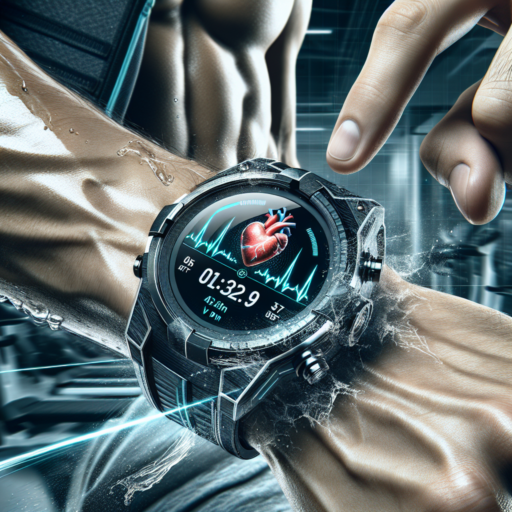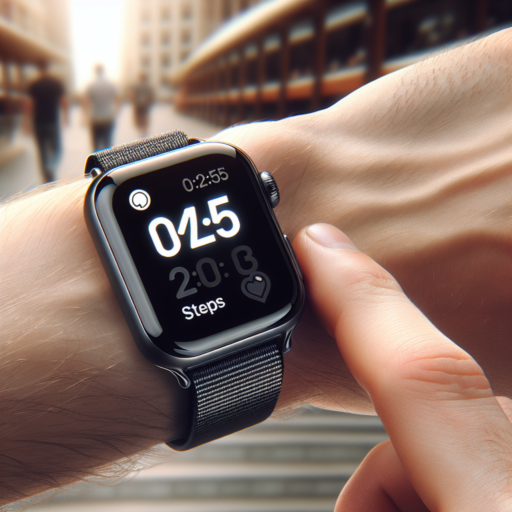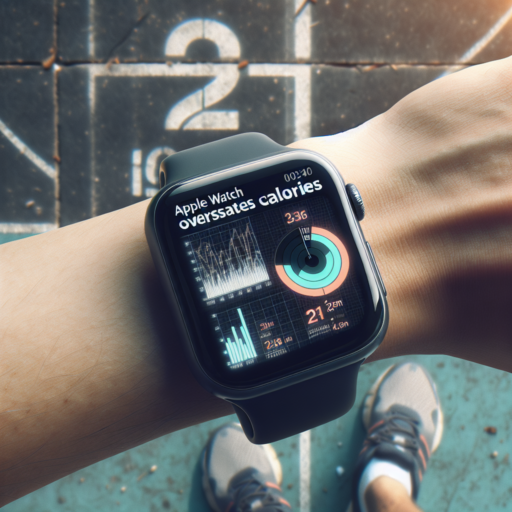What is a Fitness Heart Rate Monitor?
A fitness heart rate monitor is an invaluable tool for anyone looking to maximize their workout efficiency. It is a device designed to measure and display your heart rate in real time, providing immediate feedback about the intensity of your exercise. Typically worn around the wrist or chest, these monitors help individuals tailor their exercise routines to specific heart rate zones, optimizing fitness goals whether they’re focused on fat burning, cardiovascular improvement, or endurance training.
Types of Heart Rate Monitors
- Chest Strap Monitors: Known for their accuracy, chest strap monitors measure heart rate through electrical signals. They are worn around the chest and transmit data to a wristwatch display or a smartphone app.
- Wrist-based Monitors: These monitors use optical sensors to detect your pulse through the skin on your wrist. They offer convenience and comfort, blending seamlessly with daily wear and most exercise gear.
The usage of a fitness heart rate monitor can significantly enhance your training by allowing you to identify and maintain the ideal pace for maximum benefit. By understanding and analyzing the data these devices provide, athletes and fitness enthusiasts can adjust their workouts in real time to ensure they are in the appropriate heart rate zone for their specific fitness goals. This not only improves workout effectiveness but also minimizes the risk of overtraining or injury by keeping a close eye on the heart’s response to different levels of physical stress.
Benefits of Using a Heart Rate Monitor for Your Fitness Routine
Using a heart rate monitor during your fitness routine offers a myriad of benefits that can significantly enhance your workout efficiency and health insights. One of the primary advantages is the ability to track your cardiovascular performance and endurance improvements over time. By observing your heart rate, you can gauge if you’re pushing yourself too hard or not enough, allowing for adjustments that maximize your workout effectiveness without overexerting yourself.
Furthermore, heart rate monitors facilitate targeted heart rate zone training. This method ensures you’re exercising at the right intensity to achieve specific fitness goals, such as fat burning, improving aerobic capacity, or enhancing cardiovascular strength. By staying within your ideal heart rate zones, you can optimize your workouts for efficiency and outcome, tailoring your routine to meet your fitness targets succinctly.
Lastly, incorporating a heart rate monitor into your routine encourages the development of a personalized workout plan based on real-time data. This data-driven approach can lead to improved motivation, as you’re able to set quantifiable goals and track your progress. Additionally, it reduces the risk of injury by preventing overtraining and ensuring your heart rate remains within a safe range throughout your exercise session.
Different Types of Heart Rate Monitors for Fitness Enthusiasts
For fitness enthusiasts looking to optimize their workouts, understanding and monitoring heart rate is crucial. The technology behind heart rate monitors (HRMs) has evolved, offering various types suited to different styles of training and preferences. From strap models that provide detailed heart data to hands-free wrist devices that combine fitness tracking capabilities, there’s a heart rate monitor for every type of athlete.
Strap-Based Heart Rate Monitors
Strap-based heart rate monitors are recognized for their accuracy and consistency. They are worn around the chest, directly measuring heart rate with electrical signals. This method is favored by professionals and serious fitness enthusiasts who require precise readings. Strap models often connect to other devices, such as watches or smartphones, enabling users to track and record their heart rate over time. The main advantage of these models lies in their precision and reliability, making them ideal for detailed performance analysis.
Wrist-Worn Heart Rate Monitors
Wrist-worn heart rate monitors offer convenience and comfort, appealing to a broad range of users. These devices utilize optical sensors to read heart rate through the skin. While they might not match the pinpoint accuracy of strap-based models, advancements in technology have significantly improved their reliability. Wrist monitors often feature additional fitness tracking capabilities, such as step counting, sleep monitoring, and even stress tracking, making them versatile tools for health and fitness tracking. Their non-intrusive nature and ease of use make them popular among casual fitness enthusiasts and those who prefer a more integrated fitness gadget.
How to Choose the Best Fitness Heart Rate Monitor for You
Choosing the best fitness heart rate monitor is essential for anyone looking to get the most out of their workout regimen. Whether you’re a fitness enthusiast or just starting your journey, understanding your heart rate can provide valuable insights into your physical health and the effectiveness of your exercises. But with so many options available, how do you select the right one for your needs?
Firstly, consider the type of heart rate monitor that suits your lifestyle. There are primarily two types: chest straps and wrist-based monitors. Chest straps are known for their accuracy and are ideal for serious athletes and fitness buffs who require precise data. On the other hand, wrist-based monitors offer convenience and comfort, making them perfect for everyday use by casual exercisers.
Key Features to Look For
When browsing through your options, pay attention to the following features:
- Accuracy: This is paramount. Look for devices with a proven track record of delivering precise heart rate data.
- Connectivity: Many modern heart rate monitors sync with smartphones and other devices, allowing you to track and analyze your data more conveniently.
- Battery life: Depending on how frequently you plan to use your monitor, battery life can be a significant consideration. Some devices offer weeks of use on a single charge, while others may require more frequent charging.
Understanding your fitness goals and preferences is crucial to selecting the best heart rate monitor that aligns with your workout routine. Whether you prioritize accuracy, comfort, or additional smart features, there’s a heart rate monitor tailored to meet your needs. By considering the type of monitor and key features, you’re well on your way to making an informed decision.
Using Your Fitness Heart Rate Monitor Effectively to Improve Your Workouts
Utilizing a fitness heart rate monitor can be a game-changer for your workout routine. These devices provide insightful data that allows you to understand your cardiovascular performance and overall physical exertion during exercise. By learning how to use your heart rate monitor efficiently, you can optimize your workouts, ensuring you are training in the correct heart rate zones to meet your fitness goals.
The first step in using your heart rate monitor effectively is to ascertain your maximum heart rate. This figure is pivotal in setting the correct intensity levels for your workouts. A common method to estimate your maximum heart rate is to subtract your age from 220. Once you have this number, you can categorize your workout intensities into zones. Generally, zones range from light intensity (50-60% of your maximum heart rate) to high intensity (80-90%). Training in different zones can help you focus on specific fitness objectives, such as improving endurance or increasing cardiovascular efficiency.
Monitoring your heart rate during workouts is crucial, but equally important is the interpretation of this data post-exercise. Review your heart rate data to identify patterns and measure progress over time. For instance, you might discover that you can maintain a high-intensity pace at a lower heart rate than before, indicating improved cardiovascular fitness. Additionally, being mindful of how your heart rate responds to different types of exercise can guide you in adjusting your workout intensity, duration, and frequency to better suit your fitness level and goals.
Heart Rate Zones Explained: Optimizing Your Fitness Training
Understanding Heart Rate Zones is crucial for optimizing your fitness training, as it allows you to structure your workout sessions for maximum efficiency. These zones range from very light intensity, ideal for warming up and cooling down, to maximum effort, which is critical for improving performance and cardiovascular health. By knowing which zone you’re training in, you can ensure that each workout is contributing effectively towards your fitness goals.
There are typically five heart rate zones, each representing a percentage of your maximum heart rate (MHR). These zones are designed to guide your training intensity: Zone 1 (50-60% MHR) is about building endurance and improving recovery; Zone 2 (60-70% MHR) focuses on basic endurance and fat burning; Zone 3 (70-80% MHR) is aimed at improving aerobic capacity; Zone 4 (80-90% MHR) pushes the threshold and improves speed; and Zone 5 (90-100% MHR) which is about maximizing performance and speed. Tailoring your training around these zones can dramatically enhance your fitness levels and training effectiveness.
To accurately use these zones, calculating your maximum heart rate is a foundational step. Various methods exist for this calculation, with the simplest being the subtracting your age from 220. Once you have your MHR, you can then strategize your workouts to target specific zones, depending on your fitness objectives. Using a heart rate monitor during workouts provides real-time feedback, ensuring you stay within your desired zone for the optimal duration. This precision in training not only boosts your physical conditioning but also minimizes the risk of overtraining and injuries.
No se han encontrado productos.
Connecting Your Fitness Heart Rate Monitor with Apps for Enhanced Tracking
In the dynamic realm of fitness tracking, the integration between heart rate monitors and mobile applications has transformed the way athletes and health enthusiasts monitor their progress. By connecting your fitness heart rate monitor with companion apps, users unlock a suite of personalized insights, making it easier to tailor workouts, set realistic goals, and observe improvements over time. This synergy not only enhances the tracking of physical activity but also paves the way for a more holistic understanding of one’s health and fitness journey.
One of the pivotal advantages of linking your heart rate monitor with an app is the ability to access detailed analytics and real-time feedback. These apps typically offer a comprehensive overview of heart rate zones, calories burned, and workout intensity, all of which are crucial for fine-tuning your exercise regimen. Furthermore, this connection encourages a deeper engagement with your fitness data, fostering a sense of motivation by visually presenting the outcomes of your efforts in an intuitive and interactive manner.
Moreover, the variety of apps available means that there’s something for everyone, regardless of your fitness level or goals. From apps designed for high-intensity interval training (HIIT) enthusiasts to those focused on mindful yoga practices, the customization options are vast. Additionally, many of these apps provide community features and challenges, which can be a great source of inspiration and camaraderie. Engaging with a supportive community has been shown to significantly boost morale and accountability, further enhancing the effectiveness of your workout plan.
Must-Have Features in a Fitness Heart Rate Monitor
When selecting a fitness heart rate monitor, there are several essential features you should look for to ensure it meets your exercise and health tracking needs effectively. These features not only make your fitness journey more insightful but also help you to fine-tune your exercise regime for better results.
Accurate Heart Rate Tracking
The core functionality of any fitness heart rate monitor is to provide precise and real-time tracking of your heart rate. Look for monitors that offer continuous heart rate tracking to give you a comprehensive overview of your heart’s performance throughout your workout and even during rest. Devices that feature optical heart rate sensors are known for their accuracy and convenience, making them a top choice for fitness enthusiasts.
Bluetooth Connectivity
An essential feature for modern fitness tools is Bluetooth connectivity. This allows your heart rate monitor to seamlessly connect with other devices, such as smartphones and smartwatches, enabling you to access and analyze your data on various fitness apps. It’s not just about having your data at your fingertips; it’s also about integrating your heart rate data with other health metrics for a holistic view of your fitness progress.
Water Resistance
For swimmers or those who engage in a lot of sweat-inducing activities, a water-resistant heart rate monitor is a must. This feature ensures that your device can withstand immersion in water to a certain depth without compromising its functionality or accuracy. It expands the versatility of the monitor, allowing you to track your heart rate across a wider range of activities, from high-intensity interval training (HIIT) workouts to swimming laps in the pool.
Maintenance Tips for Your Fitness Heart Rate Monitor
Keeping your fitness heart rate monitor in top condition is essential for accurate tracking and ensuring its longevity. Whether you’re a fitness enthusiast or a professional athlete, following simple but effective maintenance tips can significantly enhance the performance and durability of your device. From regular cleaning to proper storage, these strategies will help you get the most out of your heart rate monitor.
Cleaning Your Device Regularly
One of the key aspects of maintaining your heart rate monitor is keeping it clean. Sweat and dirt can accumulate on the device, especially after intense workouts, potentially interfering with its functionality. Use a soft, damp cloth to gently wipe the sensor and strap after each use. Avoid using abrasive cleaners or chemicals, as they might damage the device. For detachable straps, consider washing them in mild soap and water every few weeks, ensuring they are completely dry before reattaching.
Proper Charging and Battery Care
Ensuring your heart rate monitor is correctly charged and taking good care of its battery can extend its life span. Avoid overcharging the device and try to keep the battery level between 20% and 80% for optimal performance. If your device uses replaceable batteries, make sure to check them regularly and replace them as needed. Using high-quality batteries can also make a significant difference in both performance and durability.
Storing Your Heart Rate Monitor Safely
When not in use, store your heart rate monitor in a cool, dry place away from direct sunlight. Excessive heat or cold can damage the device’s sensors and battery. Additionally, keeping the monitor in a fixed position where it won’t get compressed or bent is crucial for maintaining its shape and functionality. Consider using a protective case or pouch specifically designed for the device, as this can prevent accidental damage and keep it clean between uses.
Top Rated Fitness Heart Rate Monitors in 2023
Finding the best fitness heart rate monitors in 2023 is crucial for anyone looking to optimize their workout sessions. The sheer variety of options can be overwhelming, but focusing on top-rated devices simplifies the selection process. These monitors have come a long way, incorporating features that provide detailed insights into your cardiovascular health and effort levels, ensuring every jog, swim, or gym session is tracked with precision.
One of the standout features in 2023’s top-rated fitness heart rate monitors is their ability to integrate seamlessly with various fitness apps and devices. This connectivity allows for real-time tracking and analysis, giving users immediate feedback on their performance and health metrics. Whether it’s through wrist-based devices or chest straps, the accuracy and reliability of these monitors make them indispensable tools for fitness enthusiasts aiming to achieve their personal best.
Additionally, the evolution of battery life and comfort in heart rate monitors has seen significant improvements, making them more practical for everyday use. Users no longer have to worry about frequent charging or uncomfortable wear throughout the day. This enhancement in user experience has catapulted these devices to the top of the must-have fitness gadgets list in 2023.




